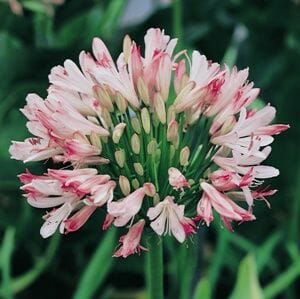Agapanthus Varieties: Selecting the very best for Your Landscape
Agapanthus Varieties: Selecting the very best for Your Landscape
Blog Article
Understanding the Art of Agapanthus Care: Necessary Steps for Healthy And Balanced Growth and Lively Blossoms
In the realm of cultivation, the growing of agapanthus stands as a satisfying undertaking for those that seek to support these sophisticated blooming plants. From choosing the best selection to grasping trimming methods, the journey towards cultivating flourishing agapanthus plants is diverse and holds the crucial to unlocking the complete possibility of these herb gems.

Choosing the Right Agapanthus Range

When selecting the ideal Agapanthus range for your garden, consider factors such as environment suitability, bloom shade, and growth practice. In addition, take into consideration the environment in your area to ensure the Agapanthus variety you choose can prosper in your certain conditions. Comprehending the development behavior of different Agapanthus varieties is crucial for proper positioning within your yard.
Perfect Growing Problems
Taking into consideration the ideal ecological requirements is crucial for successful Agapanthus cultivation. Agapanthus thrives in well-draining soil with a somewhat acidic to neutral pH degree. When planting, select a location that gets complete sunlight to partial shade. In hotter climates, supplying some mid-day shade can protect against scorching of the fallen leaves. Agapanthus plants are sensitive to cold temperatures and should be secured from frost during winter season months.
To make certain healthy and balanced development and vibrant blooms, plant Agapanthus light bulbs at a deepness of about 2-4 inches and space them 8-12 inches apart. Mulching around the base of the plants helps preserve dampness and subdues weed growth.
Watering and Feeding Tips
Keeping proper moisture degrees and supplying vital nutrients are essential elements in the care program for Agapanthus plants. When it comes to watering Agapanthus, it is essential to strike an equilibrium. These plants like consistently damp soil however are at risk to root rot if overwatered.
Fertilizing Agapanthus is necessary for advertising healthy and balanced growth and prolific blooms. Apply a well balanced fertilizer, such as a 10-10-10 formula, in the early springtime as new development emerges. Repeat this application every 6-8 weeks throughout the expanding season. Avoid excessive fertilizing, as it can bring about lavish foliage at the cost of blossoms. Constantly follow the maker's guidelines for proper dilution and application techniques. By adhering to these watering and feeding ideas, you can guarantee your Agapanthus plants thrive and produce dynamic, resilient blooms.
Trimming Techniques for Agapanthus
Pruning Agapanthus plants at the suitable times and with appropriate methods is crucial for maintaining their wellness and advertising ideal growth and flowering. The excellent time to trim Agapanthus is in late winter or very early spring prior to brand-new development emerges.
Deadheading spent flowers can additionally redirect the plant's power right into producing even more flowers instead than setting seeds. If you want to collect seeds for proliferation, leave some blossoms to mature and completely dry on the plant.
Remember to use clean, sharp tools to make specific cuts and lower the danger of presenting conditions. Agapanthus. Routine pruning will certainly assist keep your Agapanthus looking healthy and neat while guaranteeing a bountiful display screen of attractive flowers
Taking Care Of Typical Pests and Illness
After guaranteeing proper trimming strategies for Agapanthus, it is important to attend to typical pests and conditions that can influence the health and vitality of these Homepage plants. Agapanthus plants are usually sturdy but can still succumb certain problems. One common parasite that affects Agapanthus is the Agapanthus gall midget. This tiny, orange fly lays its eggs in the foliage, bring about distorted development and flower buds that fall short to open. To battle this bug, trim and ruin any type of afflicted plant components and take into consideration using insecticidal soap.
Another typical concern is fungal leaf spot, which offers as dark lesions on the fallen leaves. To prevent fungal diseases, make sure great air flow around the plants, prevent overhanging watering, and remove any kind of contaminated fallen leaves without delay. Furthermore, Agapanthus plants can deal with origin rot if they are grown in inadequately draining dirt. To avoid this, plant Agapanthus in well-draining dirt and avoid overwatering. By being click for info attentive and taking prompt activity versus illness and bugs, you can assist your Agapanthus plants flourish and generate vivid blooms.

Conclusion
In final thought, grasping the art of agapanthus treatment includes selecting the appropriate variety, you can check here offering excellent planting conditions, appropriate watering and feeding, proper trimming strategies, and resolving typical bugs and conditions. By following these crucial steps, you can make certain healthy and balanced development and dynamic blossoms for your agapanthus plants. Keep in mind to routinely monitor and maintain your plants to promote their overall health and longevity.
To make certain healthy and balanced growth and vivid blooms, plant Agapanthus light bulbs at a depth of regarding 2-4 inches and room them 8-12 inches apart. By adhering to these watering and feeding ideas, you can guarantee your Agapanthus plants grow and create vivid, lasting blooms.
One common pest that impacts Agapanthus is the Agapanthus gall midget. Additionally, Agapanthus plants can experience from root rot if they are grown in poorly draining dirt. By following these important steps, you can make certain healthy growth and lively blooms for your agapanthus plants.
Report this page